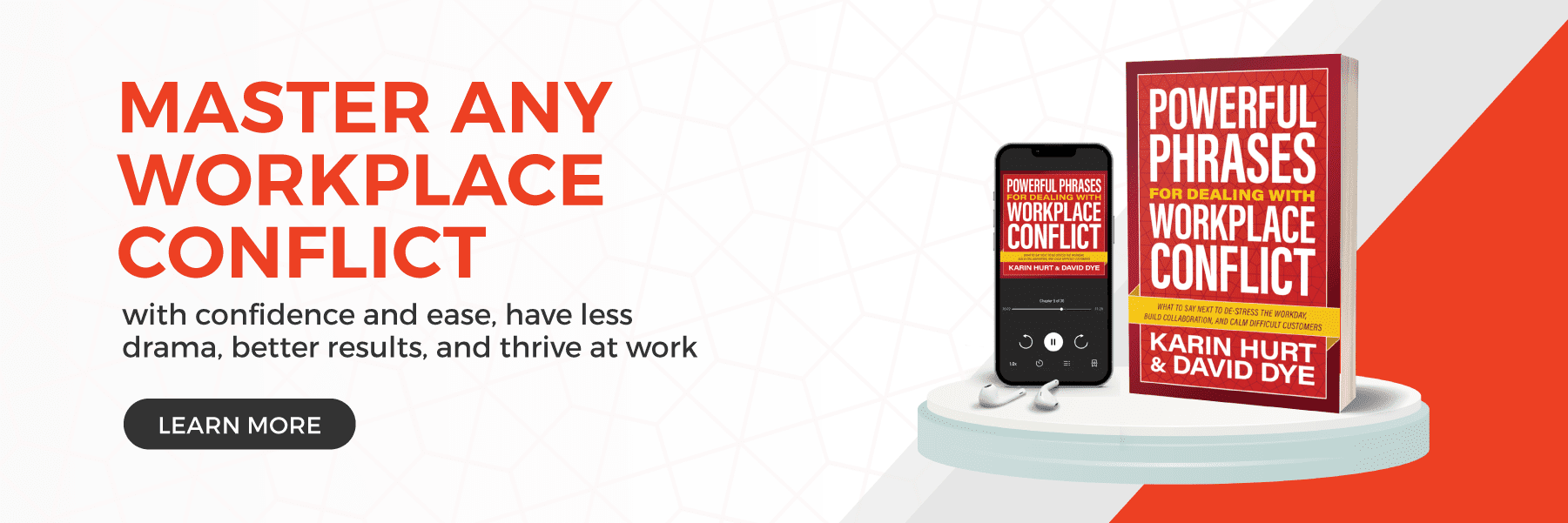“Hi, Karin, you know I just DON’T FEEL COMFORTABLE with all this AUTHENTICITY and VULNERABILITY stuff. I don’t want to have to be vulnerable at work. Do I really need to lead with vulnerability? #AskingforaFriend
A participant in one of our long-term leadership development programs asked this question when we were talking about components of trust and building deeper trust and influence.
Of course, to ask that question required real vulnerability.
Today, I invited Jacob Morgan to answer this question. He interviewed 100 CEOs and surveyed 14,000 employees to write his book “Leading with Vulnerability.” I love his practical insights on the difference between being vulnerable at work and in our personal lives. Watch our interview to learn more about this important distinction plus the 5 different styles of vulnerability “superheroes.” These styles give you some choices about different ways to express vulnerability at work.
Lead with Vulnerability, It’s Different at Work
As Jacob explains in our interview, you need to be aware of organizational dynamics. In your personal life, being vulnerable clearly helps to create trusted relationships and increases your connection with the important people in your life.
At work, you’re hired to do a specific job. If you show too much vulnerability, your team might question if you’re the right person to do that job. Sharing your challenges and feelings too much might cause more harm than good. To lead with vulnerability it’s important to recognize the structure of the organization (and where you fit into that structure) and decide how being vulnerable can actually improve your work relationships.
For example, what if you’ve been assigned a project and messed up? To lead with vulnerability, you’d acknowledge the mistakes you made and apologize. Then you’d present a plan for how you’ll do it better next time and what you’ve learned about yourself in the process. Vulnerability plus leadership really develops when you bring the vision and the confidence to the table.
The 5 Vulnerability Superheros
So, which vulnerability superhero are you at work? Here’s what Jacob says about each style:
Captain Heart
“Captain Heart is the person who wears their heart on their sleeve. They’re as authentic as you get. What you see is what you get. They’re transparent. It’s just, this is who I am. You get what you get.”
Wonder Worker
“Wonder Worker is somebody who’s comfortable with being vulnerable but around all things work-related. So they can talk about challenges and mistakes at work and anything in kind of a business environment, but they’re not as comfortable talking about things on their personal side.”
Professor Personal
Professor Personal is someone who is more comfortable talking about things that are happening outside of work. This doesn’t mean they never talk about work stuff. But oftentimes they’ll use personal lessons as a way to explain work lessons. They’ll talk about things going on in their personal life as a way to maybe inspire people inside of the organization.”
Super Situational
Super Situational is a very dynamic type of vulnerable leader who adjusts depending on who they’re talking to. So, you might be talking to a peer and have a certain vulnerability and comfort level with them. Then, I’m talking to my boss. And maybe I’m not as comfortable with them. So, you adjust your vulnerability dial depending on who you’re talking to and depending on the context and the circumstance of the situation.”
Balanced Beast
Balanced Beast is basically somebody who’s pretty equal across the board. Like, it doesn’t really matter who I’m talking to if it’s a good friend or if it’s somebody that I work with. My comfort level of vulnerability is usually pretty much the same.










0 Comments